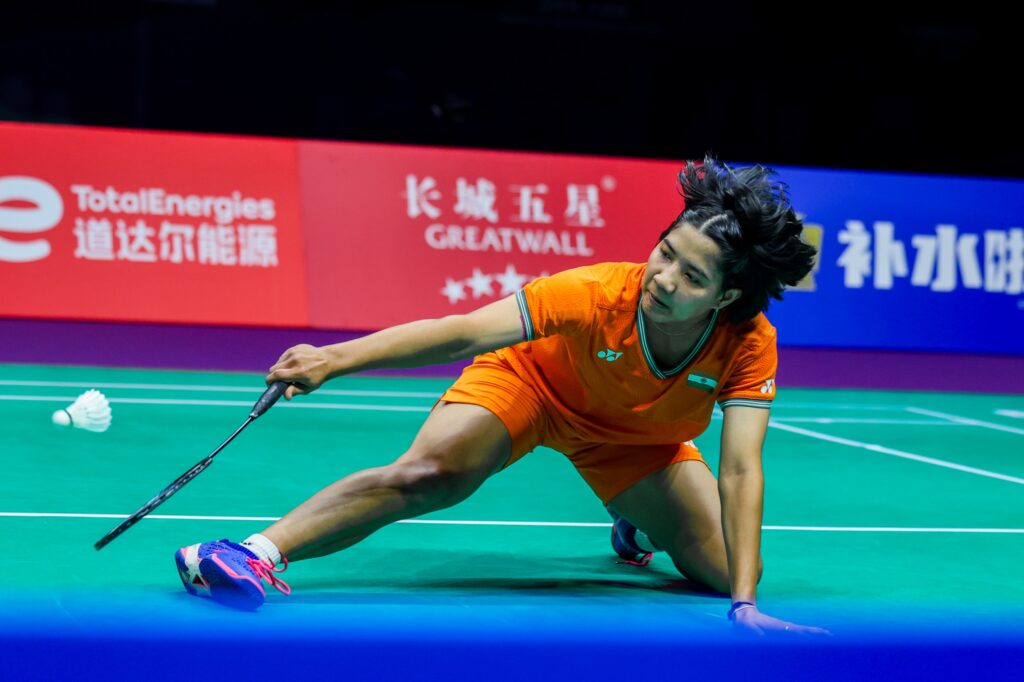
The magic of 2023 was missing in India’s Thomas Cup campaign in Chengdu, China, where the team bowed out of the quarter-final stage. But that should not lead to anyone reaching for the panic button or becoming despondent about India’s chances in the badminton competition in the Paris 2024 Olympic Games.
Let us quickly survey the results from the Uber Cup and Thomas Cup competitions before diving a bit deeper into the impact these results can possibly have on the Indians’ Olympic Games aspirations later this year.
In the absence of PV Sindhu and the doubles combination of Ashwini Ponnappa and Tanisha Crasto, the women’s team’s quarterfinal appearance in the Uber Cup was heart-warming. Ahead of the tournament, few would have backed the youngsters to make it to the knockout stages with two victories in three matches in the group stage.
Without the services of even the second best doubles pair of Gayatri Gopichand Pullela and Treesa Jolly, India’s victories over Canada and Singapore were well earned, but it is the losses to China (0-5) in the climactic Group A match and Japan (0-3) in the round of eight that would have given some critical learnings.
Ashmita Chaliha beat higher ranked Michelle Li (Canada) in the opening Group A match and took a game off World No. 11 Aya Ohori (Japan) in the quarterfinals. Isharani Baruah contributed with victories in the first two matches, including a comfortable win against a top-50 player, Wen Yu Zhang (Canada). And 17-year-old Anmol Kharb marked her presence before she tore a ligament.
Simran Singhi and Ritika Thaker as well as Shruti Mishra and Priya Konjengbam, currently ranked the country’s fifth and sixth best women’s doubles pairs, justified their selection by winning their encounters against Canada and Singapore. Each member of the young India team put her best foot forward and will return from Chengdu with great learnings.
We shall get to the Olympics-qualified men in just a bit after casting a glance on the others in the Thomas Cup squad. Kidambi Srikanth’s three-game loss to Chico Aura Dwi Wardoyo in the critical group clash with Indonesia will hurt him more than anyone else. Kiran George posted a victory when he got a chance against England.
India’s second best men’s doubles pair of Dhruv Kapila and MR Arjun won their matches against Thailand and England’s combinations. However, when Dhruv had to team up with reserve doubles player Sai Pratheek in the two big matches, the scratch combination was unable to make a dent in the Indonesian and Chinese citadels.
Now let us turn our attention to the four players who have qualified for the Olympic Games.
Satwiksairaj Rankireddy and Chirag Shetty, ranked World No. 3 in the men’s doubles, had a 50 per cent win record in the four three-game matches that they played. Their losses came to Indonesia’s World No. 9 combination of Muhammad Shohibul Fikri and Bagas Maulana and top-ranked Chinese pair of Liang Wei Keng and Wang Chang.

World No. 9, HS Prannoy started with a straight-game loss to Thailand’s Kunlavut Vitidsarn but followed it up with victories over England’s Harry Huang and Indonesia’s Anthony Ginting in the big clash. He extended China’s World No. 2 Shi Yu Qi to three games in the quarterfinals and showed that he was well on his way to ending his dismal run of form since the dawn of the year.
Each of World No. 13 Lakshya Sen’s three matches went to three games. He lost to World No. 3 Jonatan Christie (Indonesia) but beat World No. 6 Li Shi Feng (China). The spunk he showed throughout was indicative of his resurgence, that helped him overcome a string of unhappy results, and make it to the All-England Open semifinals and secure a ticket to Paris.
With 84 days to go for the start of the year’s biggest sporting spectacle – and one in which all of India expects multiple medals from the shuttlers – it is not time to panic but to look at possible learnings not only from the Thomas Cup campaign, but also from the tournaments on the BWF World Tour.
Should these results, especially the defeats at the hands of their Indonesian and Chinese opponents, cause creases of worry to form on Indian foreheads? Not at all. They are, at best, wake up calls for the Indian thinktank, especially in preparing them physically for the rigours of the Olympic Games.
For one, the Indian players must be able to close out more contests that extend into third games in the knockout stages. Yet, even as technique and tactics have their role, the emphasis on physical preparation can never be too high. It will help them have the reserves of energy needed to close out such contests.
The scheduling of matches in Chengdu was such that the team did not have adequate rest ahead of its quarterfinal with China. Since little can be done about scheduling, the management of rest and recovery becomes critical, especially in the knockout phase. The team’s support staff will play a big role in ensuring that players are fresh in mind and body each time they step on the court.
The results may not have gone India’s way in Chengdu and yes, the magic of 2022 Thomas Cup campaign was not replicated, but it must be realised that in an Olympic year, the main focus of the players who have qualified will be to find that extra gear to peak in Paris without letting any of the intensity lead to injury. You can be sure that the Indians will put their bodies on the line in Paris.




